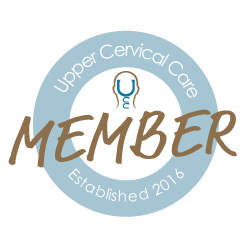Trigeminal neuralgia (TN) is a debilitating condition that causes intense, stabbing facial pain. Often likened to an electric shock, the pain can come on suddenly and last for seconds or minutes, making even the simplest daily tasks — such as eating, speaking, or brushing your teeth — incredibly difficult. TN primarily affects the trigeminal nerve, one of the largest nerves in the head, which is responsible for sensations in the face. While traditional treatments often rely on medications and surgery, chiropractic care is emerging as a valuable, non-invasive alternative for trigeminal neuralgia treatment.
At Anatomy Chiropractic, we specialize in helping patients find relief from this painful condition through a holistic approach that addresses the root causes of nerve pain and supports overall health.
Understanding Trigeminal Neuralgia
Trigeminal neuralgia is a chronic pain disorder that affects the trigeminal nerve, which has three branches that run through the face: the ophthalmic (eye and forehead area), maxillary (cheeks and upper jaw), and mandibular (lower jaw and teeth) branches.
The pain associated with TN is typically sharp, sudden, and severe, often triggered by simple routine activities. The episodes of pain may last anywhere from a few seconds to a few minutes, but can occur in quick succession. This condition is most common in individuals over the age of 50, but it can affect anyone.
There are two primary types of trigeminal neuralgia:
- Type 1 (Classic TN): This form is usually caused by the compression of the trigeminal nerve, often due to blood vessels pressing against the nerve. Over time, this compression can damage the nerve, causing the sharp pain.
- Type 2 (Symptomatic TN): This type of TN is secondary to another underlying condition, such as multiple sclerosis (MS), which affects the protective sheath around the nerves (myelin).
Traditional Trigeminal Neuralgia Treatment Options
The conventional approach to treating trigeminal neuralgia involves a combination of medications and, in some cases, surgical interventions. However, these treatments often come with side effects and may not always provide lasting relief.
1. Medications
- Anticonvulsants: The most commonly prescribed medications for TN are anticonvulsants like carbamazepine, oxcarbazepine, or gabapentin. These drugs work by stabilizing nerve activity and reducing the intensity of pain signals sent by the trigeminal nerve. However, long-term use of these medications can lead to side effects such as dizziness, fatigue, and cognitive impairment.
- Tricyclic Antidepressants: Some patients are prescribed antidepressants such as amitriptyline to help manage nerve pain. These drugs can alter the way pain signals are processed, though they also carry the risk of side effects such as dry mouth, blurred vision, and weight gain.
- Muscle Relaxants: In certain cases, muscle relaxants such as baclofen may be used to help reduce muscle spasms associated with trigeminal neuralgia.
While these medications can be effective for short-term pain management, they do not address the underlying causes of trigeminal neuralgia, and the side effects can be burdensome for some patients.
2. Surgical Options
When medications fail or cause intolerable side effects, surgical treatments may be considered. Some of the most common surgical options include:
- Microvascular Decompression (MVD): In this procedure, surgeons remove or reposition blood vessels that are compressing the trigeminal nerve. This is often considered the most effective surgical treatment for classic TN.
- Gamma Knife Radiosurgery: This non-invasive procedure uses targeted radiation to damage the trigeminal nerve, reducing the transmission of pain signals. This treatment can be effective but may require multiple sessions, and there is a risk of recurrence over time.
- Trigeminal Rhizotomy: This procedure involves selectively cutting or damaging the trigeminal nerve to block pain signals. While it provides pain relief, it may lead to some sensory loss in the affected area.
While these surgeries can offer significant relief, they are invasive and come with potential risks, including complications and side effects. Additionally, surgery does not guarantee long-term relief, as trigeminal neuralgia may return in some cases.
Chiropractic Care & Trigeminal Neuralgia
Chiropractic care offers a non-invasive, holistic alternative to manage trigeminal neuralgia pain. Here are some ways chiropractic care can support trigeminal neuralgia treatment:
1. Spinal Adjustments to Relieve Nerve Compression
One of the core principles of chiropractic care is that the spine and nervous system are deeply connected. Misalignments in the spine, particularly in the neck, can place pressure on the spinal cord or the nerves branching from it, including the trigeminal nerve. These misalignments can interfere with normal nerve function and contribute to pain and inflammation.
Chiropractors use gentle spinal adjustments to correct these misalignments, restoring proper alignment to the spine and reducing pressure on the nerves. By performing precise adjustments, chiropractors can relieve compression on the trigeminal nerve, potentially reducing the frequency and severity of TN pain. This approach addresses the root cause of the issue — nerve irritation — rather than just masking the symptoms with medications.
2. Reducing Inflammation and Muscle Tension
Chronic pain can lead to muscle tension, particularly in the neck, jaw, and face. When the muscles around the affected nerve become tight, they can exacerbate pain and discomfort. Chiropractic care includes various techniques such as massage therapy, trigger point therapy, and myofascial release to reduce muscle tension and promote blood flow to the affected areas.
These therapies help relieve muscle spasms and improve circulation, reducing inflammation and supporting the body’s natural healing processes. By addressing both the musculoskeletal and nervous system components of TN, chiropractic care can offer a more comprehensive approach to pain management.
3. Improving Nervous System Function
The nervous system controls and regulates all bodily functions, including the transmission of pain signals. Chiropractors work to ensure that the nervous system is functioning optimally by correcting spinal misalignments and improving nerve communication. When the spine is properly aligned, nerve signals can travel more efficiently, reducing pain and discomfort associated with conditions like trigeminal neuralgia.
By enhancing nervous system function, chiropractic care can support the body’s ability to cope with pain and accelerate the healing process. For individuals with trigeminal neuralgia, improving nervous system function can also help prevent future flare-ups.
4. Holistic & Non-Invasive
One of the key advantages of chiropractic care is that it offers a non-invasive, drug-free option for managing pain. Unlike medications that may come with a range of side effects or surgical procedures that carry inherent risks, chiropractic care is a safe, gentle alternative that focuses on restoring balance and function to the body. This holistic approach emphasizes natural healing and can provide long-term relief without relying on harmful substances or invasive interventions.
For those who want to avoid long-term medication use or surgical procedures, chiropractic care can be an excellent complementary treatment for trigeminal neuralgia. Chiropractic adjustments not only help with pain relief but also improve overall health and well-being.
5. Lifestyle and Wellness Recommendations
Chiropractors often provide lifestyle recommendations to further support pain relief and prevent future episodes of trigeminal neuralgia. These may include:
- Posture correction: Poor posture can exacerbate neck pain and lead to misalignments. Chiropractors help you understand how to maintain proper posture to reduce strain on your spine.
- Stress management: Emotional and physical stress can contribute to muscle tension and pain. Chiropractors can recommend relaxation techniques like yoga, meditation, or deep breathing exercises.
- Exercise: Chiropractors can suggest exercises that strengthen the muscles supporting the spine and improve flexibility, which can help prevent misalignments and nerve compression.
Don’t Let Pain Control Your Life
If you or someone you know is struggling with trigeminal neuralgia, we encourage you to explore the benefits of chiropractic care. Schedule a consultation with us today to learn how we can help you achieve relief and start your journey toward a pain-free future!


